George Foltz – Salem, Forsythe County, North Carolina
George Foltz was born in 1798. According to Gunsmiths of the Carolinas, 1660 – 1870, he was a “bricklayer, carpenter and gunsmith from 1819 – 43, at the Moravian Community near Wachovia, North Carolina. Foltz came to Wachovia from Nazareth, Pennsylvania. He was apprenticed to Christopher Vogler on May 1, 1816. In John Bivins book, Longrifles of North Carolina, Bivins states that Foltz was apparently working with Timothy Vogler after his apprenticeship, since they filed a joint newspaper advertisement for “maple plank…for gunstocks” in the late 1830’s
This rifle has a full stock made of curly Maple with brass furniture. The stock is in excellent condition with only a minor repair to the wood between the lock and the tang. The stock has an incised line on both sides of the comb, which is typical on North Carolina rifles. There is a single loop under the cheek piece to hold a vent pick. The other loop is missing. The brass hardware consists of a butt plate, toe plate that extends from the toe of the rifle to the rear of the trigger guard. A trigger guard, square/diamond shaped washer instead of a typical side plate, a rear entrance thimble and two ram rod thimbles, and a nose cap. All the hardware appears to be original to the rifle. The round tail flintlock appears to be original to the rifle, however I doubt that it is in the original flint configuration. The frizzen has been “re-shoed” with a thin layer of steel to extend its life. The lock is marked GOULCHER in script and functions properly. The double set triggers are typical of triggers manufactured in Salem North Carolina with the forward trigger having a distinct rearward curl at the bottom. The triggers function properly. The .42-caliber rifled barrel is 46 1/4-inches long and 1 inch across the flats. There is evidence that the barrel may have been shortened approximately 1-inch during its life. This supports that it may have been converted to percussion at some point, and then re-converted back to flint. The bore is in excellent condition with no pitting. The barrel is stamped G FOLTZ between the rear sight and the breech. The tang is 6-inches long and is secured with two screws. The front sight may not be original to the rifle as it is thicker and stands higher than typically seen on these rifles. The initials AEA are carved into the right side of the butt stock next to the butt plate.
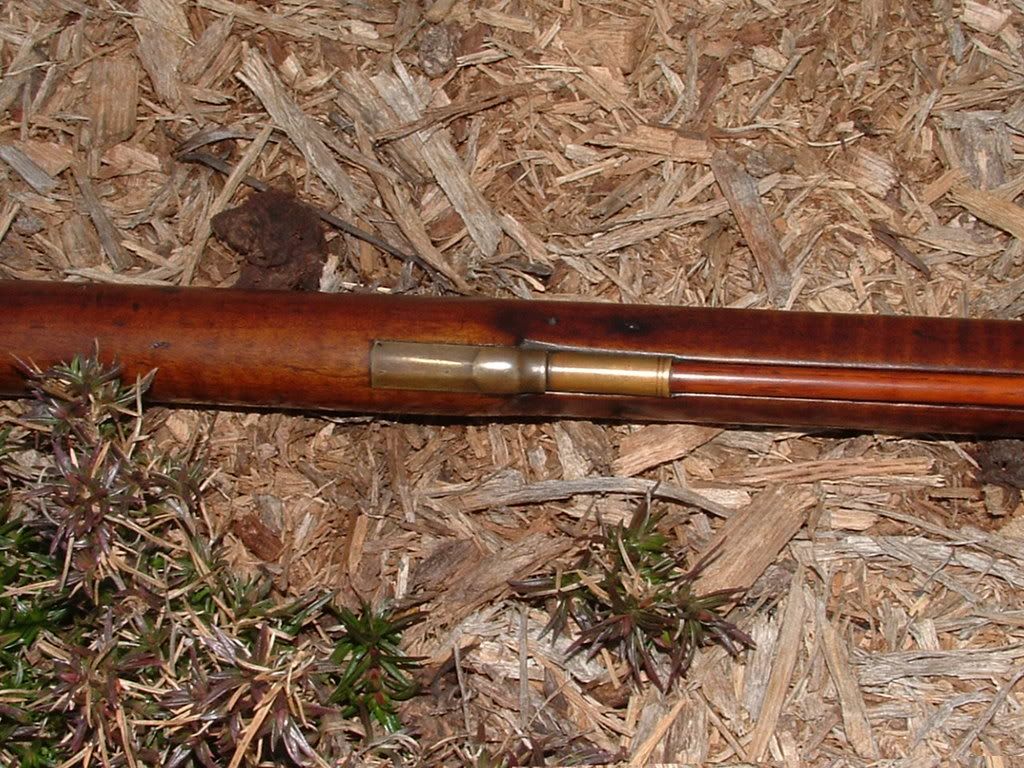

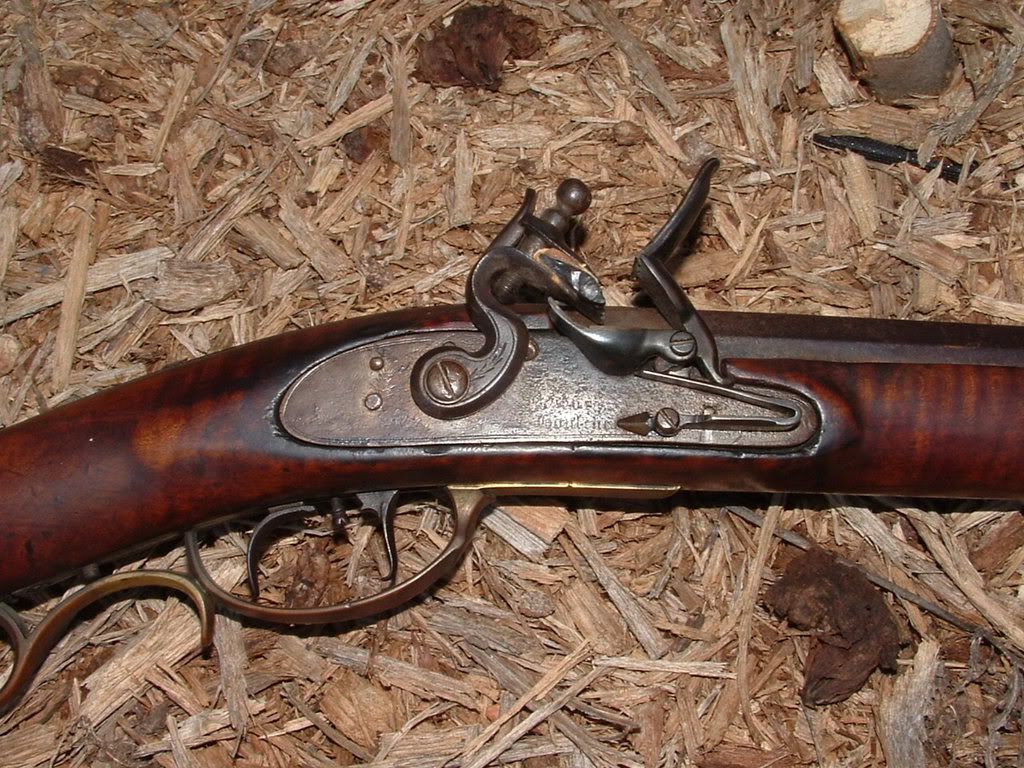
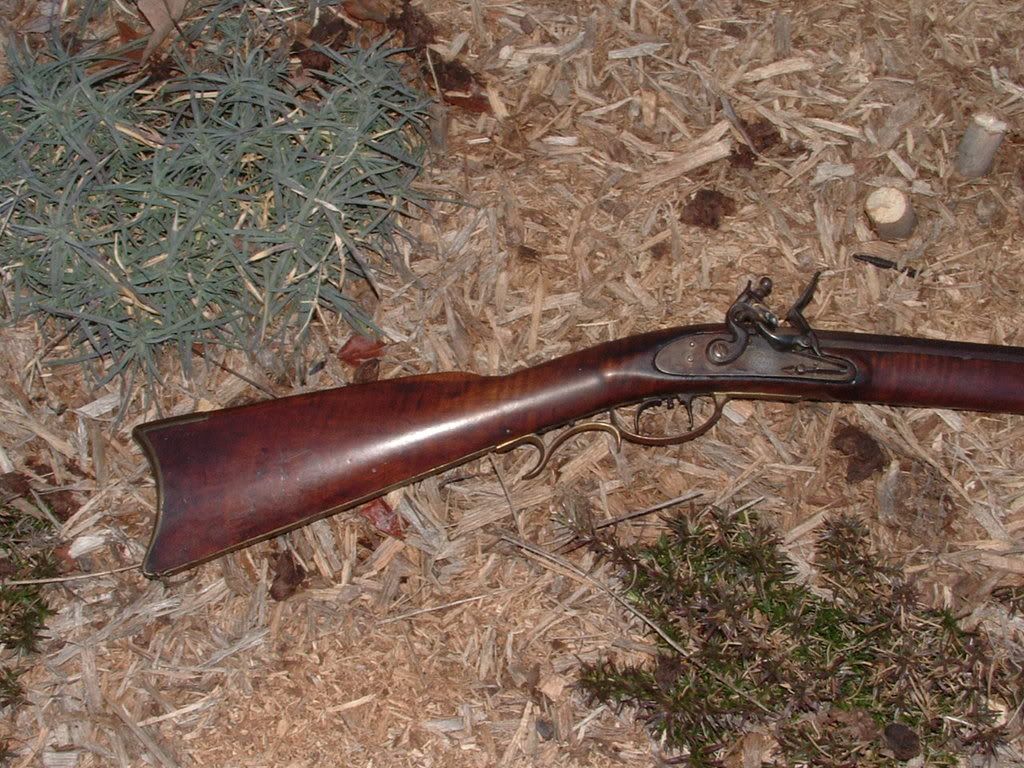
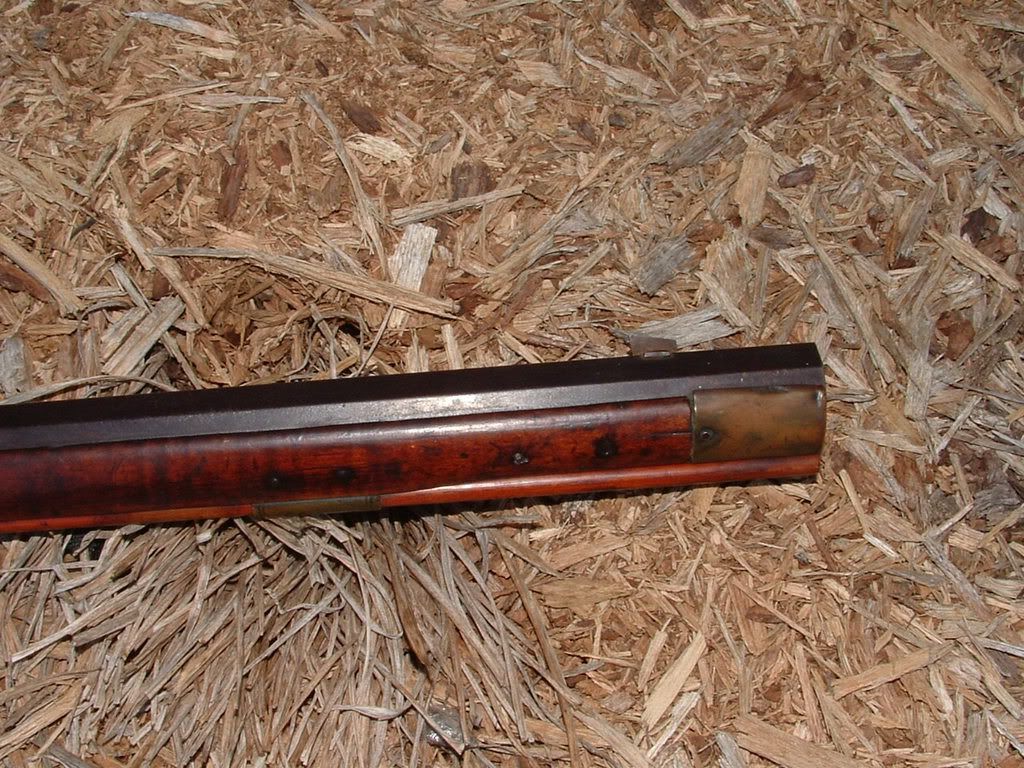
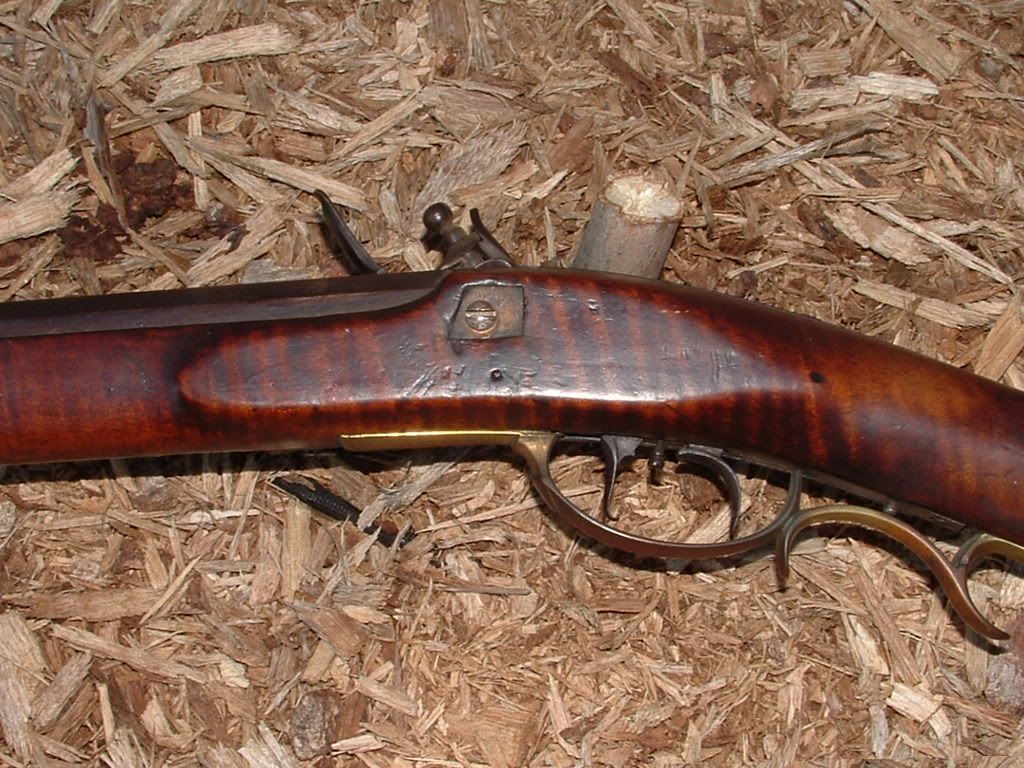

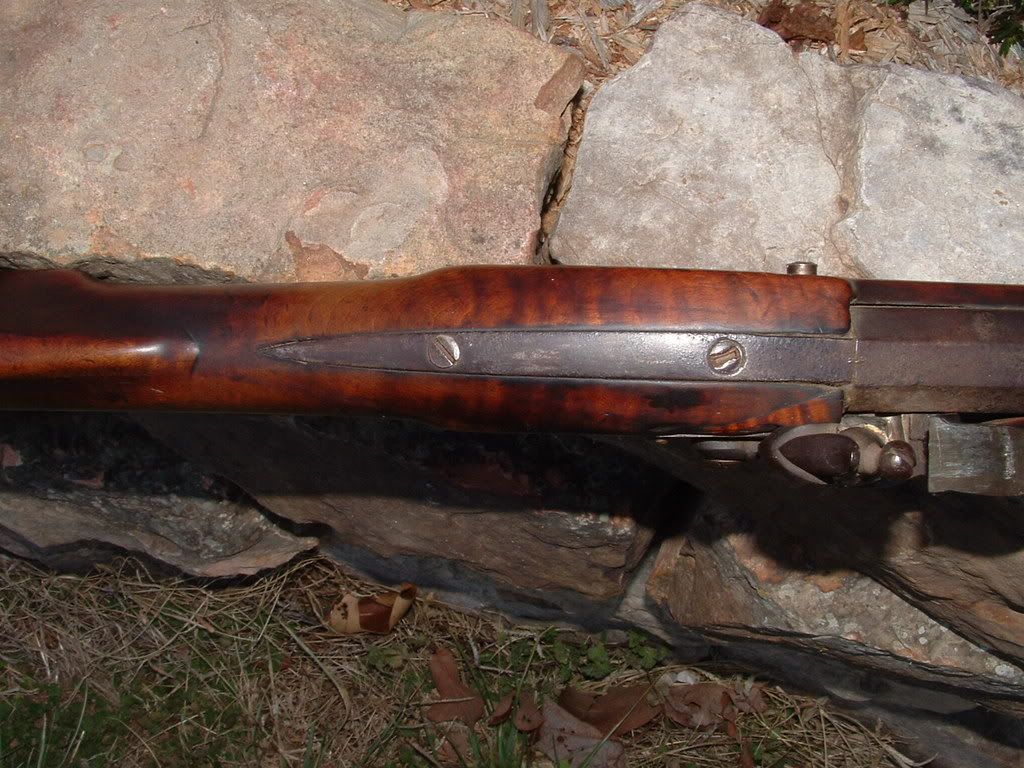

Comments:
A great old rifle! The only question that crosses my mind is this. Was this rifle originally flint in th first place? I have seen a fair number of "re-converted" rifles over the years that I feel very sure were originally percussion. Collectors forty years ago had a different attitude about such things than we do today, and there was a great demand for flintlocks.

